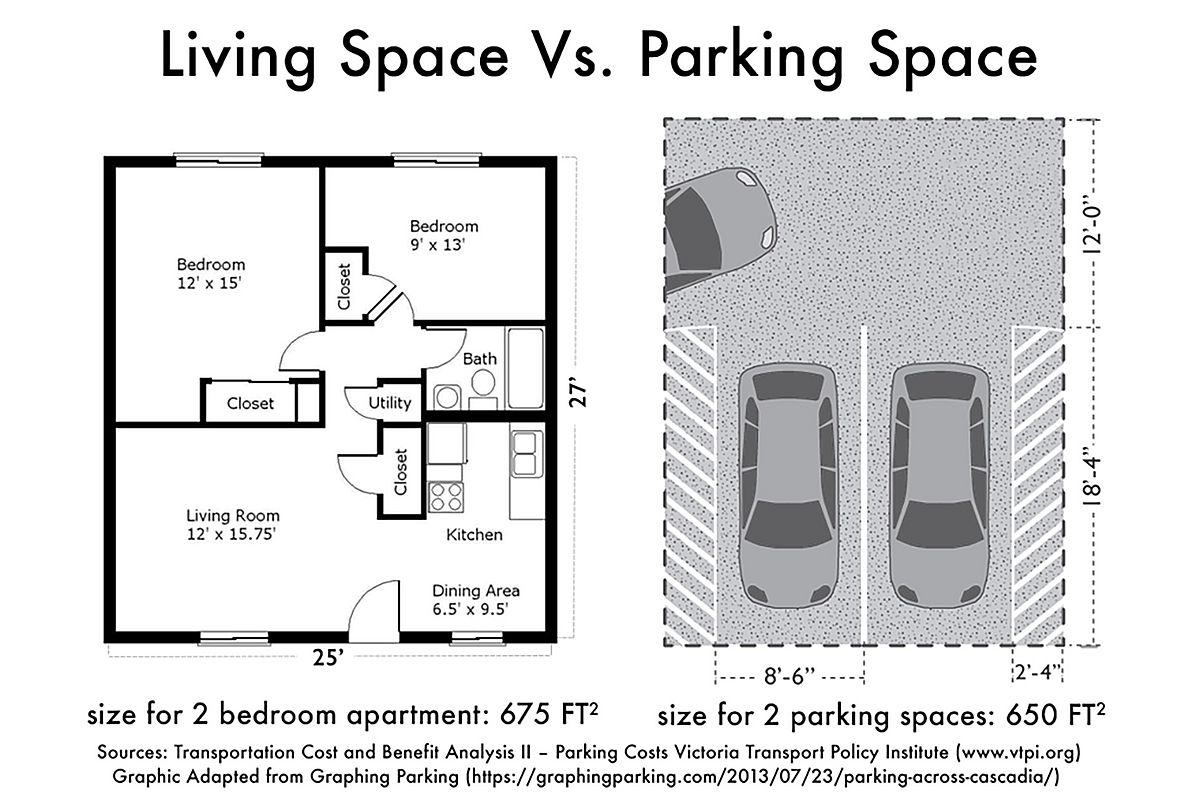2023 LDC Amendments – Parking Requirements
For generations, city policies have required or encouraged building massive numbers of parking spaces throughout the country. For every one of the more than 260 million automobiles registered in the USA, conservative estimates show that there are at least three parking spaces out there. Essex Junction is no exception, with rules that require homes and businesses to build ample parking, even if they will be empty most of the time.
Parking Takes Up A Lot of Space!
A parking space itself takes up about 180 square feet, but when ramps, driveways, and access paths are taken into account, it’s closer to 300 square feet per stall. When building new homes in space-constrained cities, we increasingly have to choose between housing more people or housing more cars.

In recent years, cities throughout the country have begun to rethink their policies around parking requirements, shifting the focus from ensuring abundant, convenient parking options to ensuring opportunities for creating an abundance of affordable, conveniently located housing options.
Parking Is Expensive To Build, and Somebody Always Pays the Price
Parking is expensive to build. A cost of 40K-$60K per stall is quite typical for above-ground parking structures, while underground parking can easily double the cost. Even surface lots can be expensive when you consider the opportunity cost of the space it consumes.
Residents and tenants usually pay the price as a part of their rent or mortgage, even if they don’t use it. For example, a one-car family living in a condominium building mandated to have two spaces per unit would have to pay for the empty parking space. In addition to the obvious affordability implications, the extra space incentivizes families to buy an extra car when they’re on the fence about needing it, increasing traffic congestion and emissions on our city streets.
Reducing the Minimum Parking Requirements in Essex Junction
UPDATE: With the passage of the H.100 State Housing Bill, municipalities are prohibited from requiring more than one parking space per residential unit, under most circumstances. The LDC amendments, as proposed would meet this requirement.
The proposed LDC amendments would reduce the parking requirements for residential uses from two parking spaces per dwelling unit to one. These would be minimums, so homebuilders would still have the flexibility to build more. We anticipate many developers will continue to build more than the minimum requirements. Still, we expect the proposed policy to result in some housing options geared toward one-car or zero-car households.
This proposal would not change parking requirements for commercial and industrial uses. For details, see Section X in the markup document.
Encouraging Shared Parking Arrangements
Office parking lots tend to be busy during weekdays but empty in the evening and on weekends. Retail establishments and restaurants tend to be the opposite. What if these types of businesses could join forces and share parking? That is possible through shared parking arrangements.
The LDC amendments would encourage the use of shared parking arrangements and allow for a reduced parking provision when appropriate. Not only would this open up the opportunity to build on smaller, oddly shaped lots, but this would also make it easier for the adaptive reuse of existing buildings that may have insufficient parking on site, as long as they are located near other parking lots with underutilized capacity.
Click here to return to the main page for the 2023 LDC Amendments.
